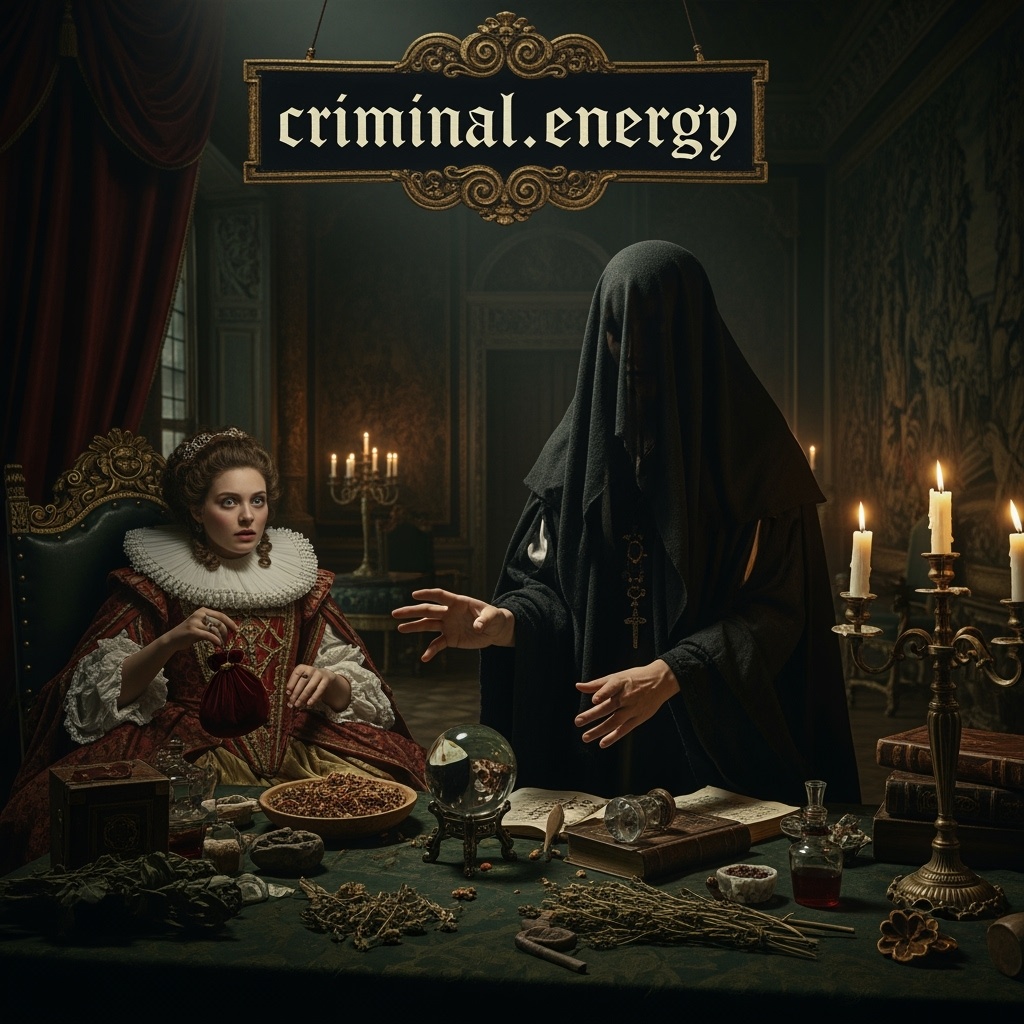In 17th-century Paris, where glamour and glitz were often overshadowed by dark secrets and intrigue, the so-called “poison affair” took its course. This episode in French history is not only an example of the depths of human nature, but also shows the dangers of power and influence that were closely intertwined with court life under King Louis XIV.
The protagonists of this affair, from the mysterious witch La Voisin to the seductive Marquise de Montespan, reveal a web of greed, seduction, and deadly magic that reaches into the heart of the French aristocracy. The events surrounding La Voisin, a witch from the slums of Paris, are symbolic of the social structures and fears of the time. Her practice of necromancy and brewing love potions testify to a deep superstition that drove people to believe both in the power of magic and in the possibility of fulfilling personal desires through dark forces. The king’s visits to La Voisin were not only an expression of great despair, they also signified a quest for control over their own destinies. For many women at court, the king’s beauty and affection were synonymous with power and influence. Françoise-Athénaïs de Montespan, the brilliant marquise, was a particularly fascinating figure in this narrative. Her undeniable beauty concealed a deeply manipulative personality who did everything in her power to become Louis XIV’s mistress. Her encounter with La Voisin was no coincidence, but the result of years of scheming in which she was prepared to do anything to win Louis. The use of love potions and dark magic was a risky strategy, but one that would only partially protect her from the consequences of her actions. Marie Angélique de Fontanges, who was the Sun King’s mistress for over 11 years and bore him seven children, played another important role in the poisoning scandal. But with age, her beauty faded, which is why she felt threatened by Athénaïs’ ambitions. This rivalry culminated in a drama that not only affected personal fates, but also tested the social norms and moral values of the time. Athénaïs’ manipulations and La Voisin’s sinister practices, which were also used by Marie Angélique Fontanges, created a dangerous cocktail that shook the entire aristocratic society. Black masses were held in which priests cut the throats of babies bought from prostitutes lying on naked women in order to collect their blood in a vessel and bake it into communion wafers. These wafers were placed between the thighs of women, including Marie Angélique Fontanges, who then had sexual intercourse with other men. As the “poison affair” reaches its climax, the disturbing dynamics of power and downfall become clear. The case of Magdelaine de La Grange, who ultimately initiated the investigation into the poisoners in 1677, shows how quickly suspicion and paranoia can spread in an environment rife with intrigue. The Paris police chief Gabriel Nicolas de la Reynie was put in charge of the scandalous poisoning affair and, on behalf of Louis XIV, established the special court “Chambre ardente” in April 1677. From January 23, 1680, there was a veritable wave of arrests against 319 people. The subsequent confessions led to a public trial that called into question not only those involved, but also the structures of the entire court. When La Voisin was finally convicted of witchcraft and executed in 1680, it was a turning point that reflected the fears and superstitions of society at the time. However, despite the dramatic developments surrounding the trials and the Inquisition, the question of guilt and the true motives of those involved remains unresolved. Athénaïs de Montespan, in particular, remained under suspicion of being involved in the incidents, without any concrete evidence ever being presented. Her relationship with Louis XIV suffered under the pressure of rumors and the weight of evidence against her. However, the king kept her as his mistress while banishing Marie Angélique Fontangnes from court. The subsequent closure of the “Chambre ardente” by Louis XIV can be interpreted as an attempt to regain control over public opinion and consolidate his own authority. This decision reflected the fear that was spreading at the royal court in Versailles. The fear of the disclosure of internal scandals and the potential threat to his reign. Furthermore, it shows how the king placed his own interests above justice in order to secure both his position and the stability of his regime. While the “poison affair” ultimately reflected public opinion on witchcraft and superstition, it was also a catalyst for transformations within society. It led to the emergence of new views on power, gender, and morality in the French aristocracy. The looming threat of poisoning scandals fostered a culture of mistrust and surveillance that would later evolve into the Enlightenment. The “poison affair” not only exemplifies superstition and the constant threat of dark forces in 17th-century society, but also provides a profound analysis of human fears and desires. The complex relationships between the court ladies and King Louis XIV reveal the challenges and moral decay that come with such a position of power. Amidst happiness, love, and intrigue, humanity is put to the test as the boundaries between good and evil become increasingly blurred.

